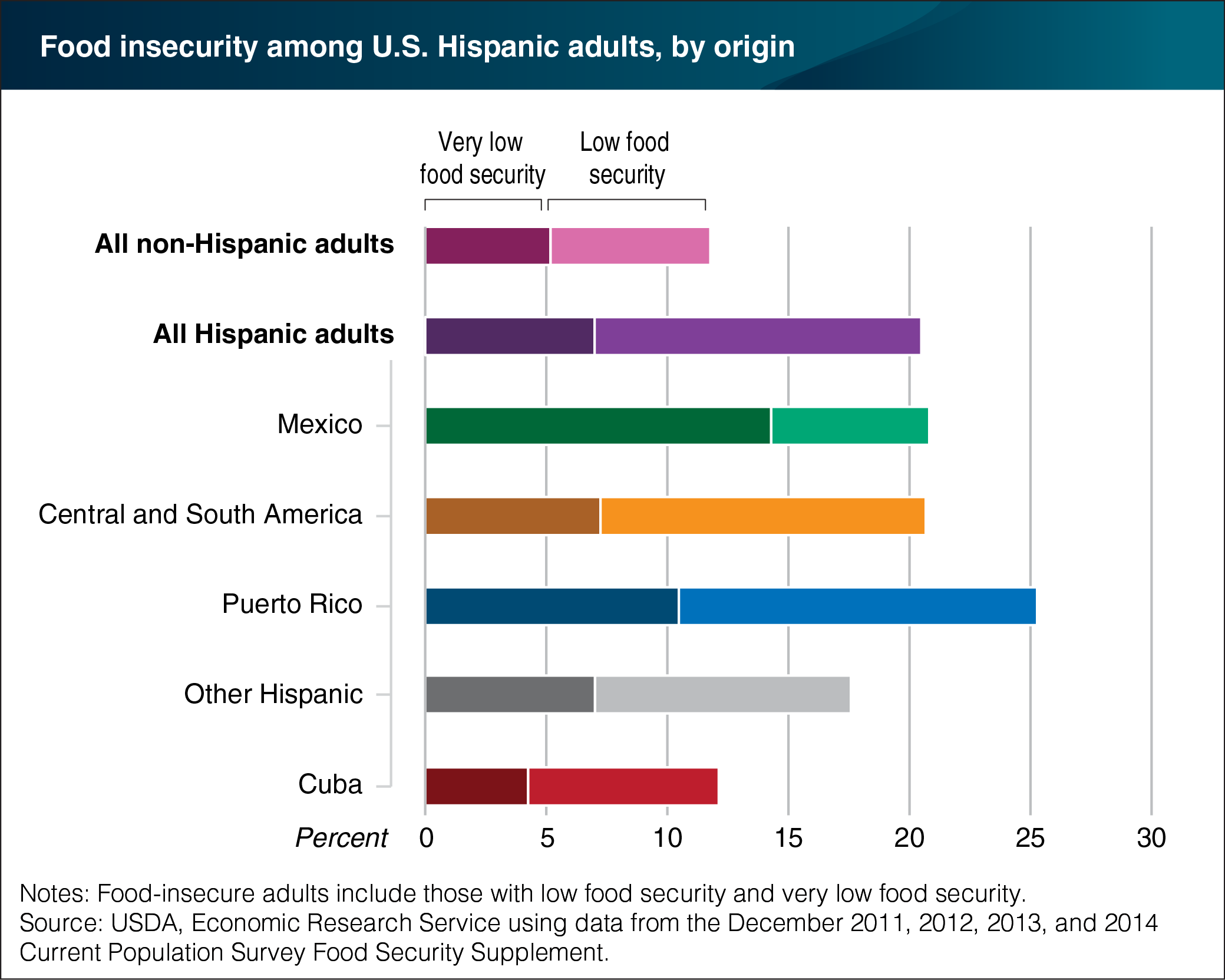Among U.S. Hispanic adults, those with Puerto Rican origins have highest food insecurity rates
- by Michael D. Smith
- 5/17/2016

In 2014, 20.6 percent of U.S. Hispanic adults lived in food-insecure households compared to 11.8 percent of non-Hispanic adults. Food-insecure households have difficulty consistently obtaining adequate food for all household members because of limited economic resources for food. The percent of adults living in households with very low food security—a more severe level of food insecurity—was also higher for Hispanics: 7.0 percent compared to 5.2 percent for all U.S. non-Hispanic adults. Food insecurity rates varied among Hispanics of different origin (the individual’s place of birth or that of their parents or ancestors). Food insecurity in 2011-14 was least prevalent among Hispanic adults identifying as having Cuban origin (12.1 percent) and most prevalent among Hispanic adults identifying as Puerto Rican, followed by those with Mexican origins and other Central and South American origins. In 2011-14, 14.3 percent of Hispanic adults identifying as having Mexican origin reported very low food security, compared to 4.2 percent of Hispanic adults of Cuban descent. This chart appears in the ERS report, Food Security Among Hispanic Adults in the United States 2011-2014, released on May 11, 2016.

